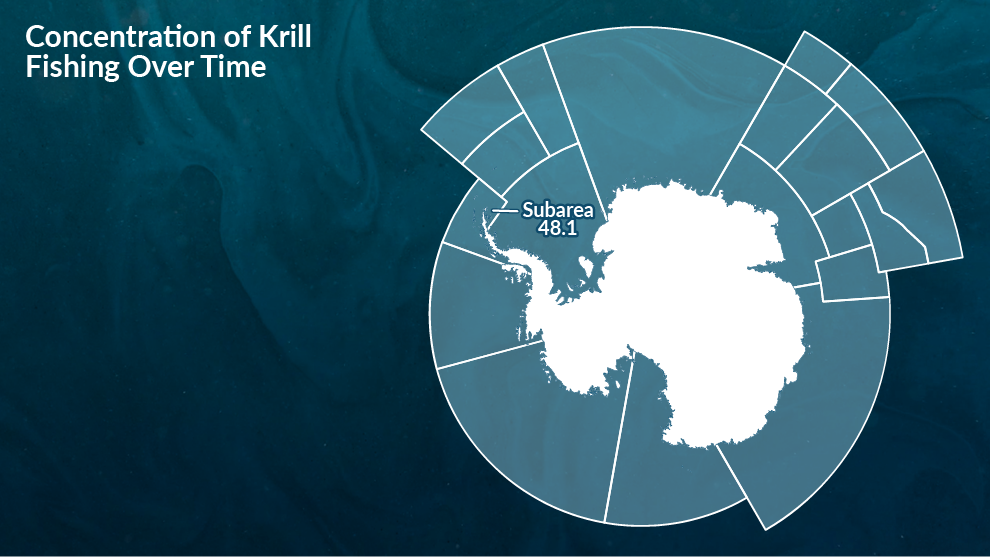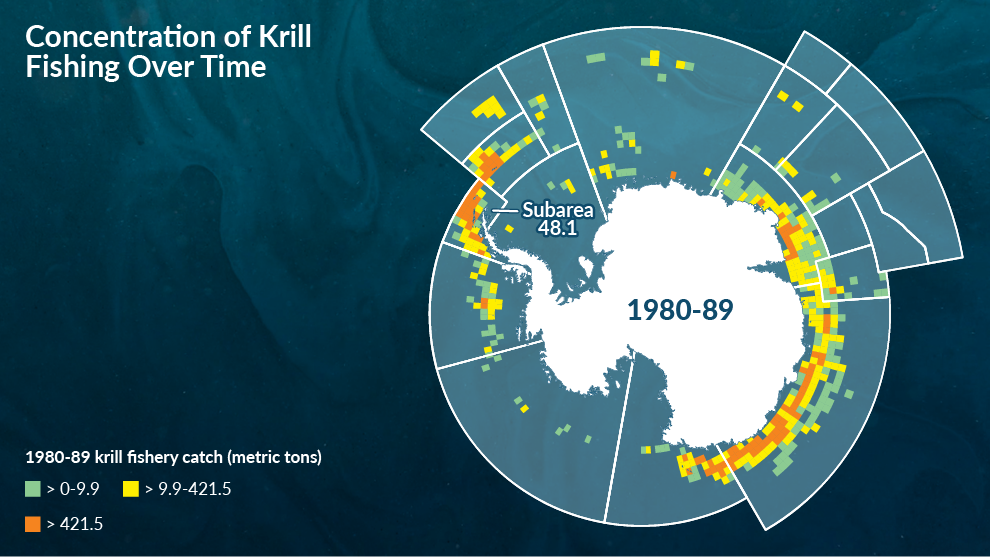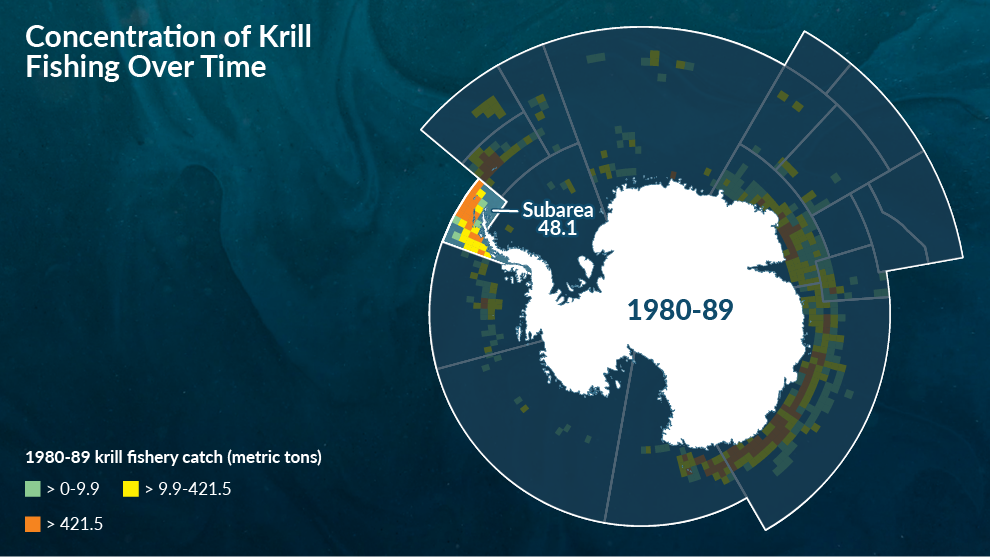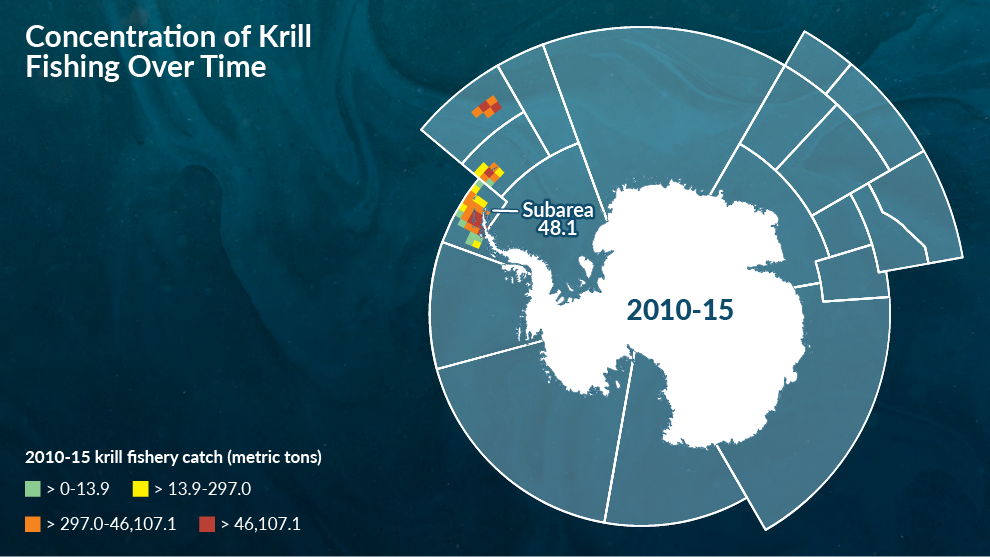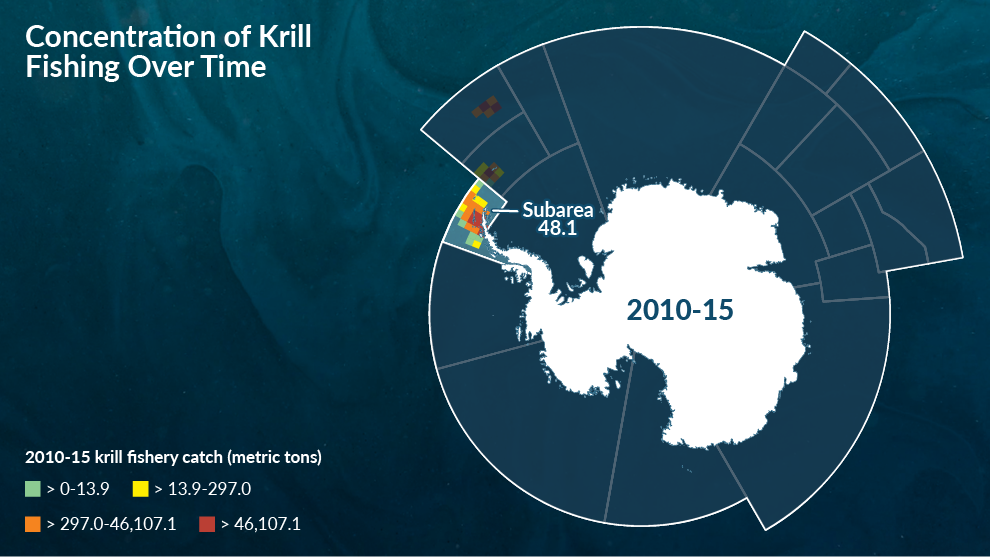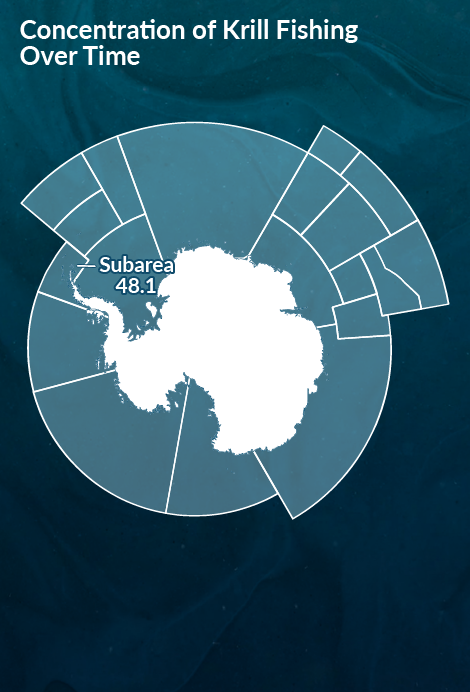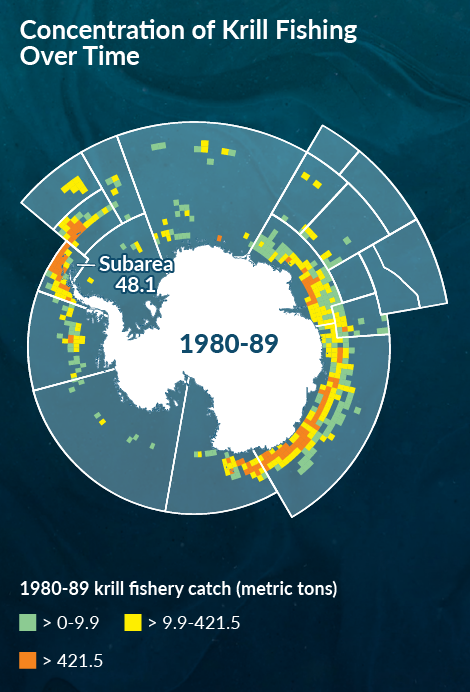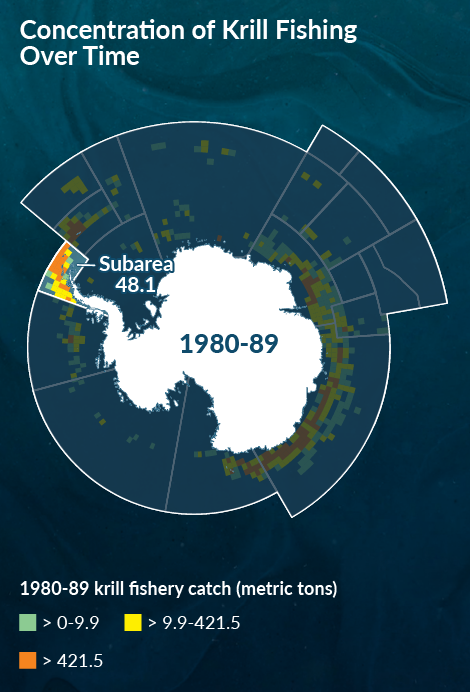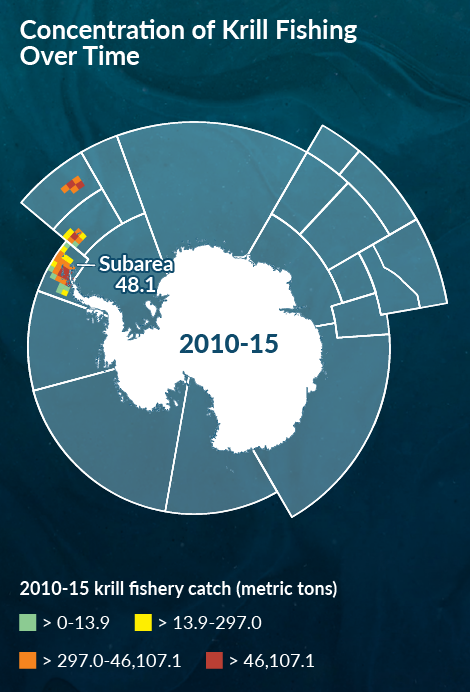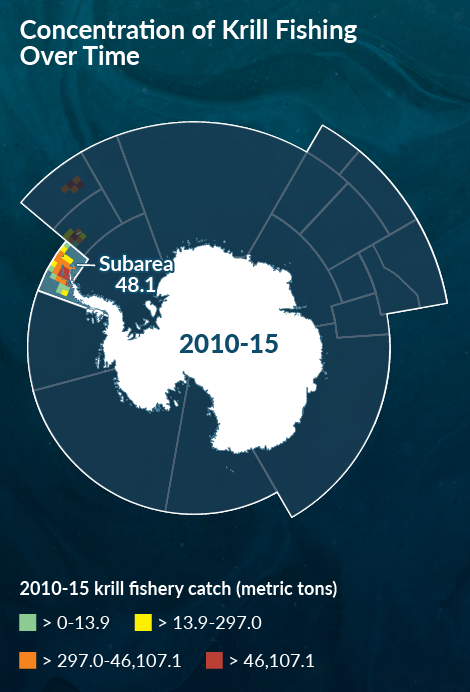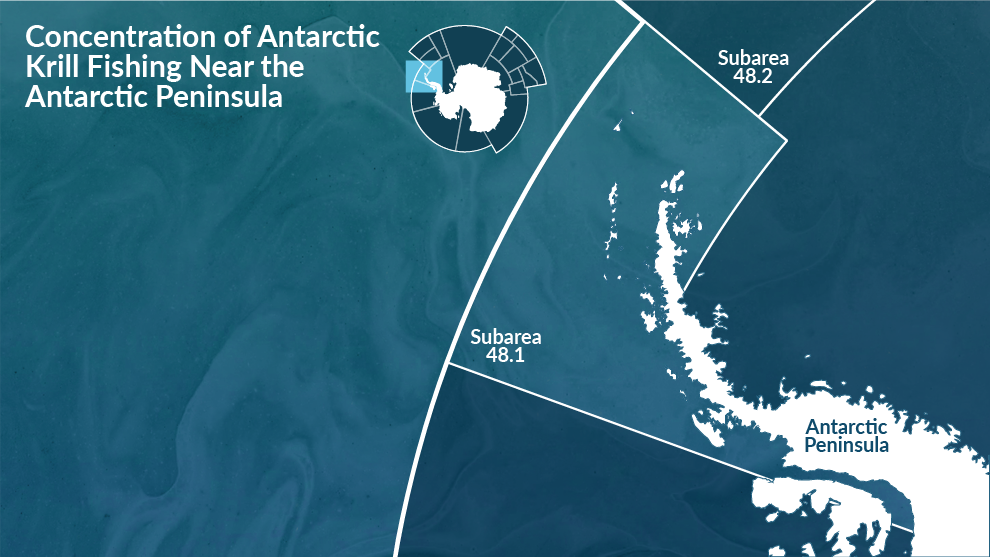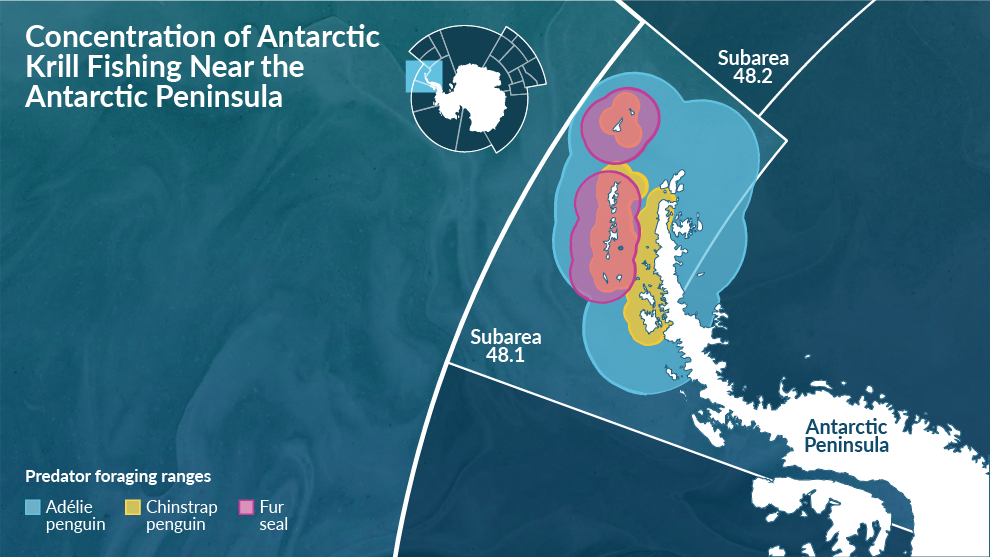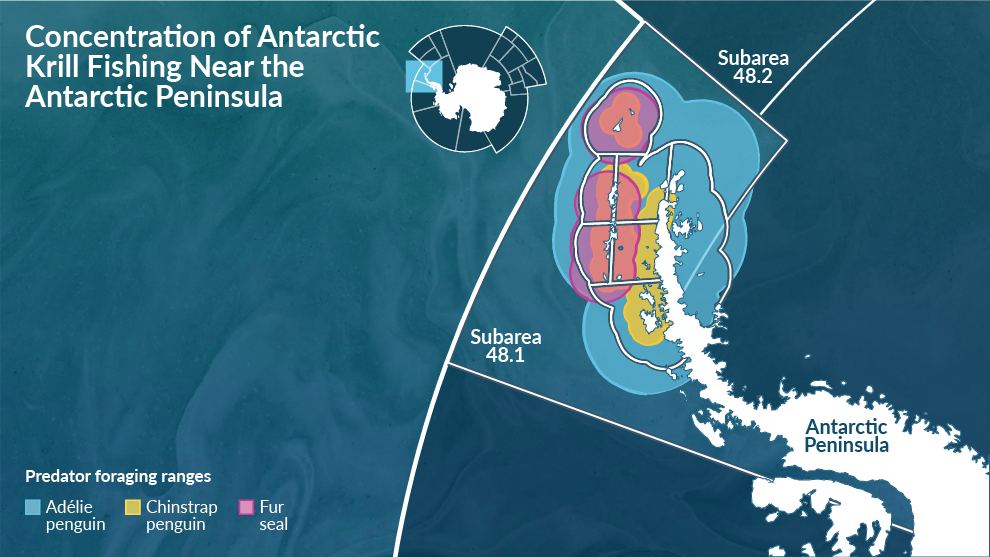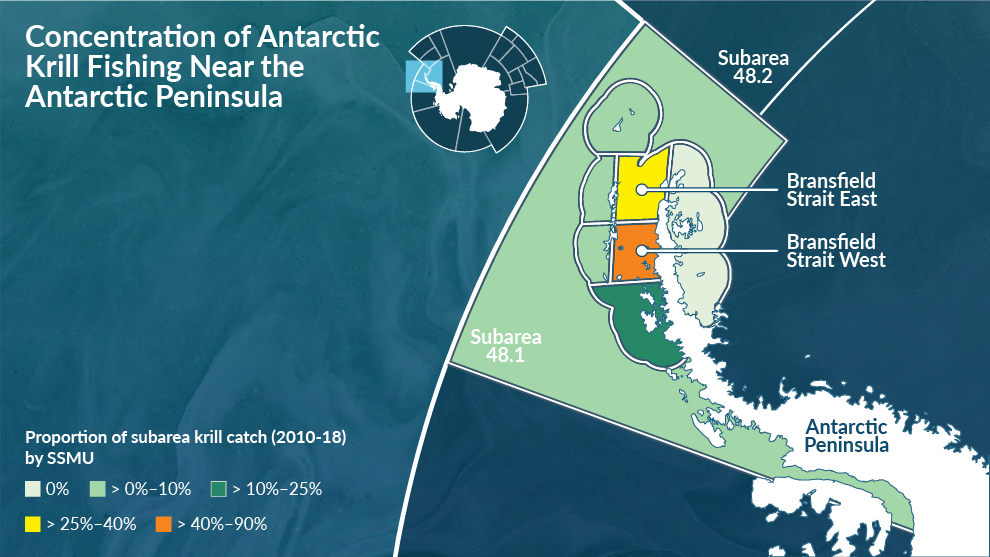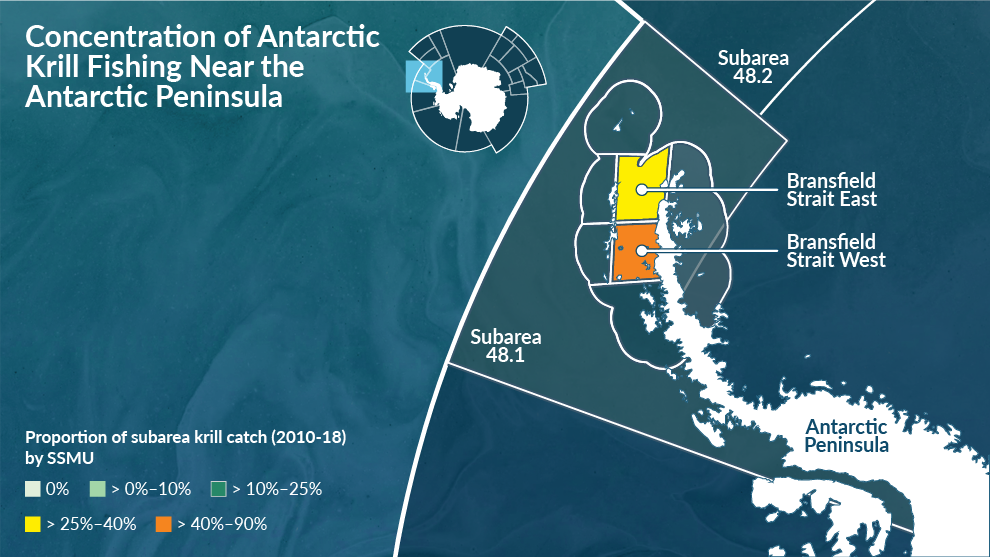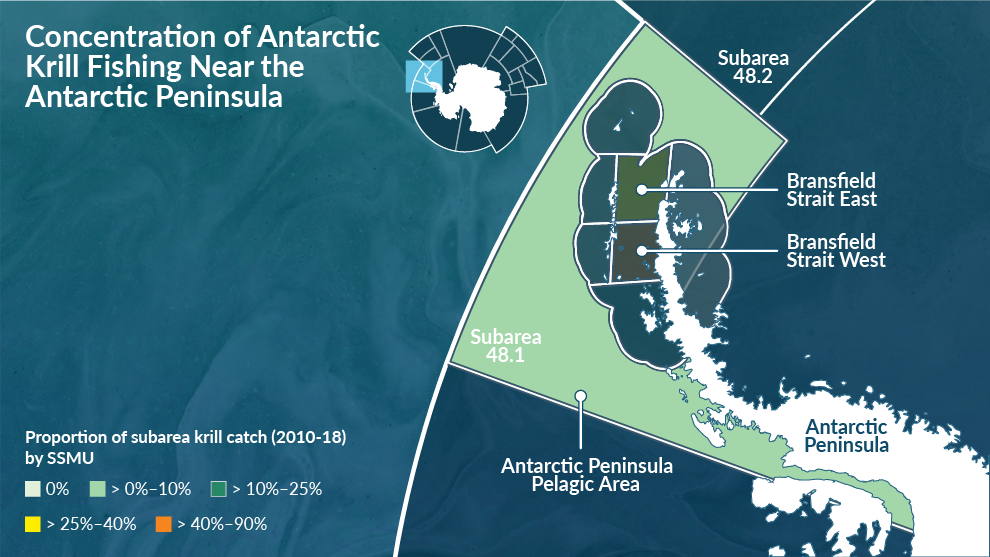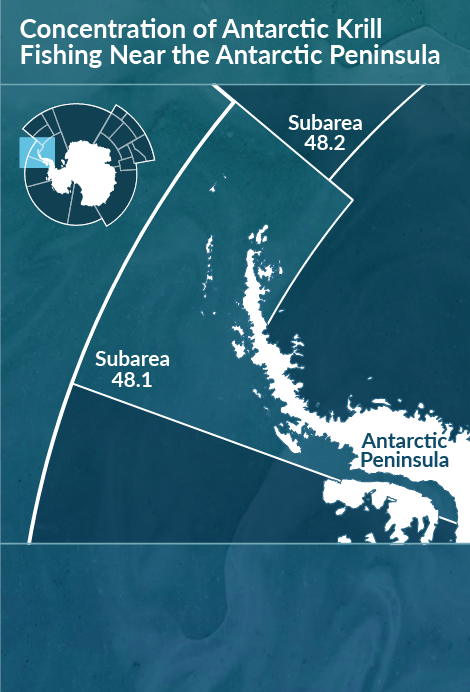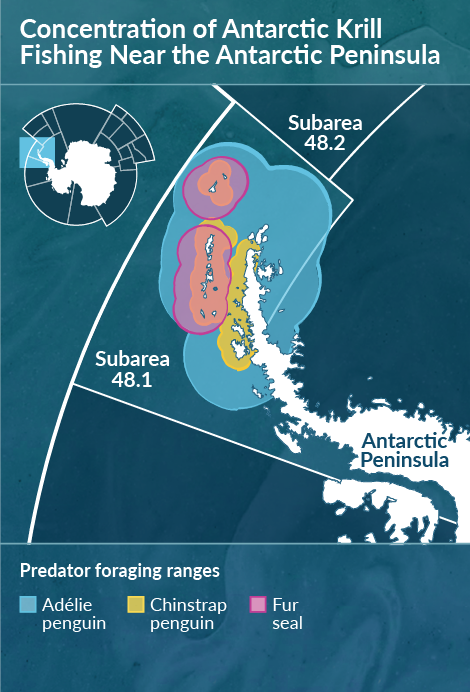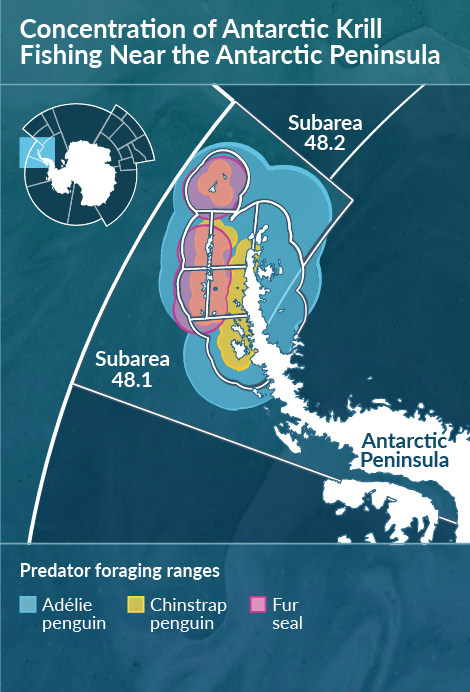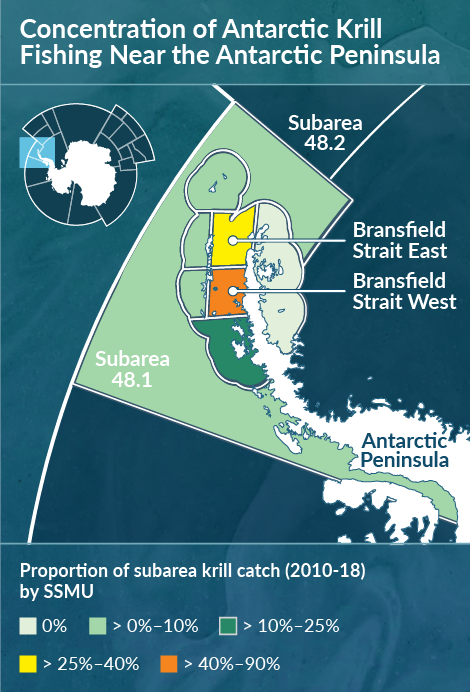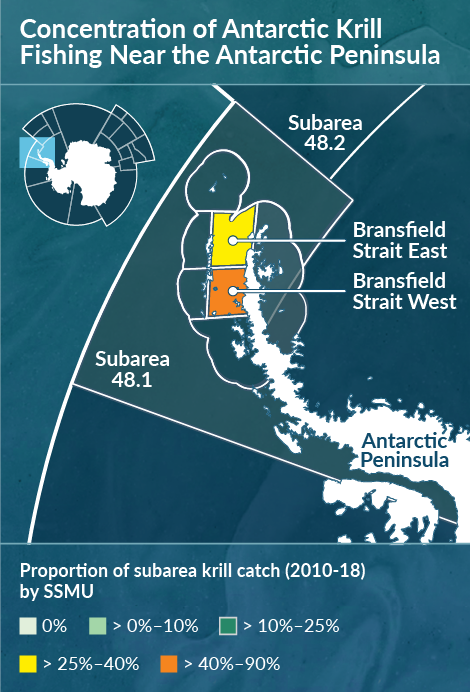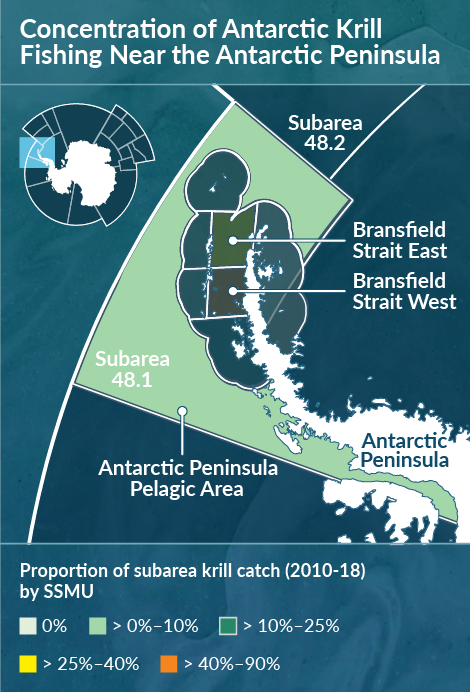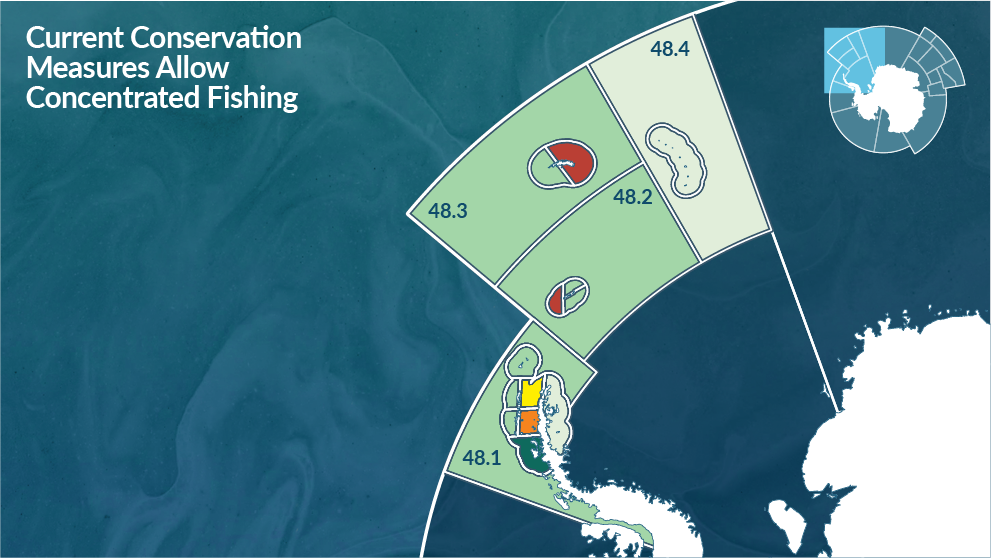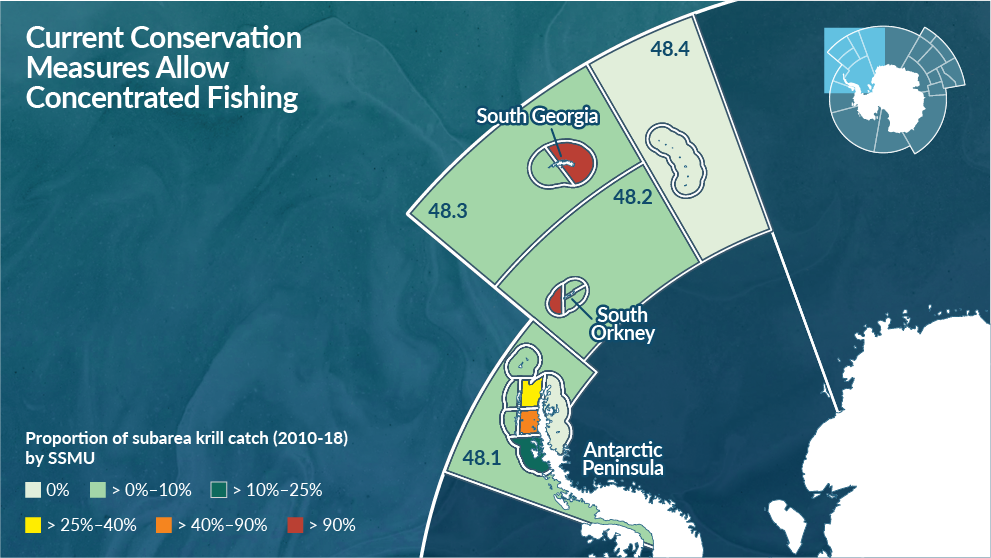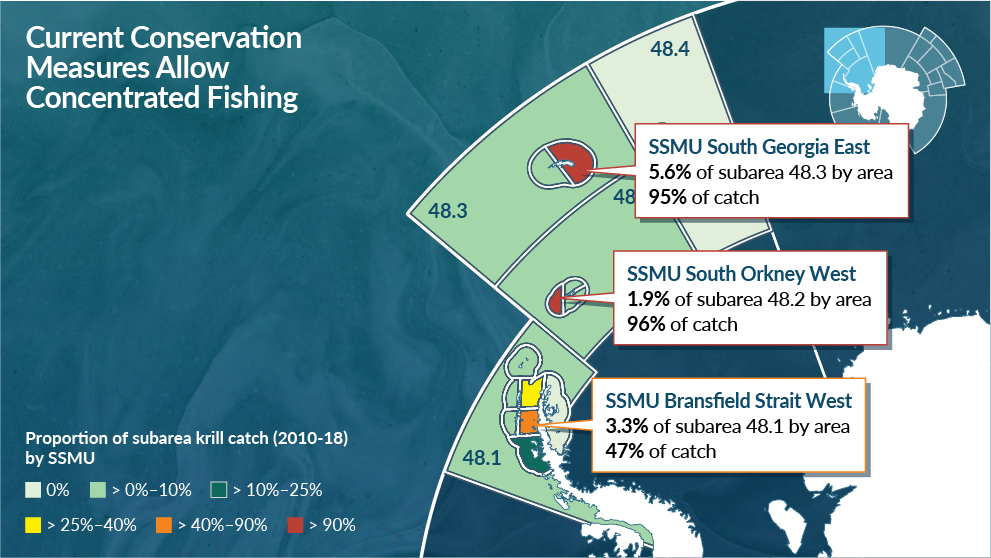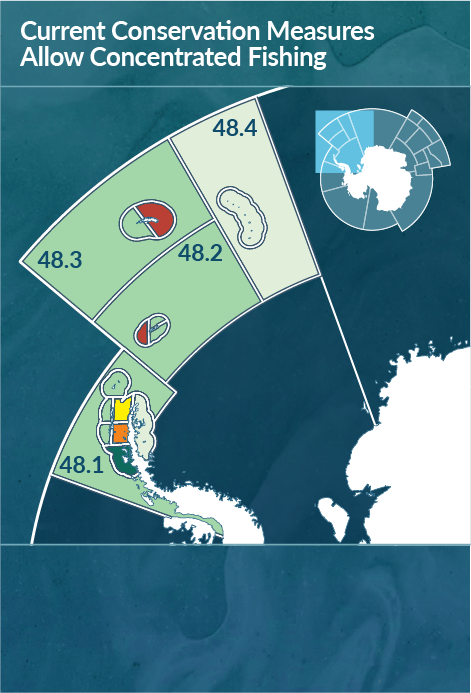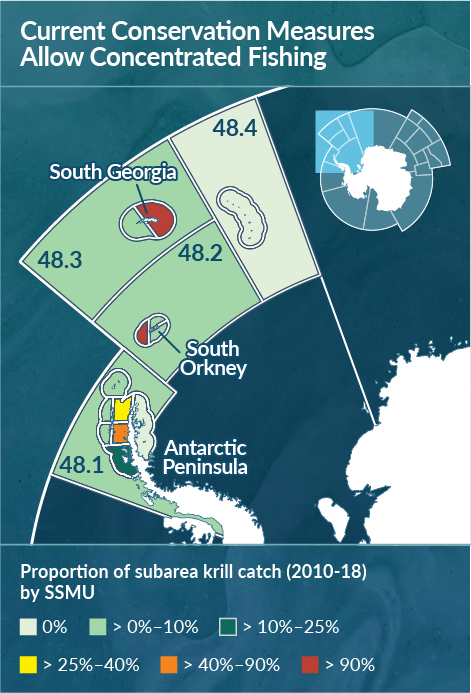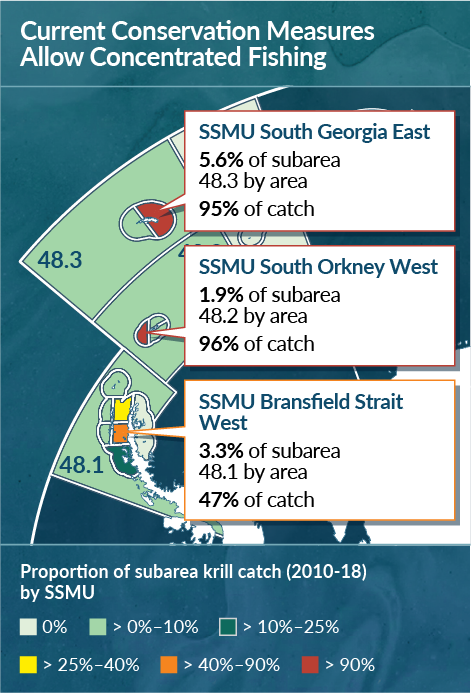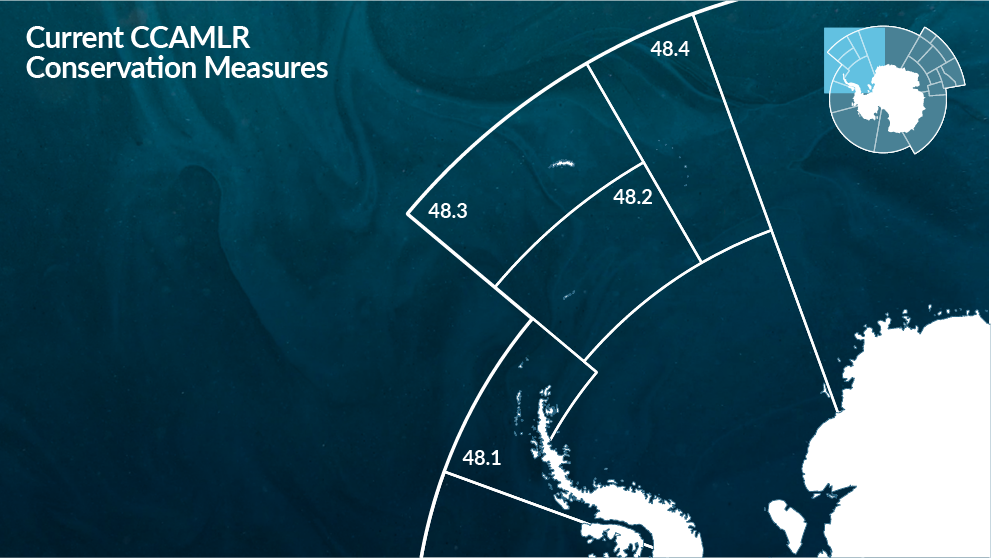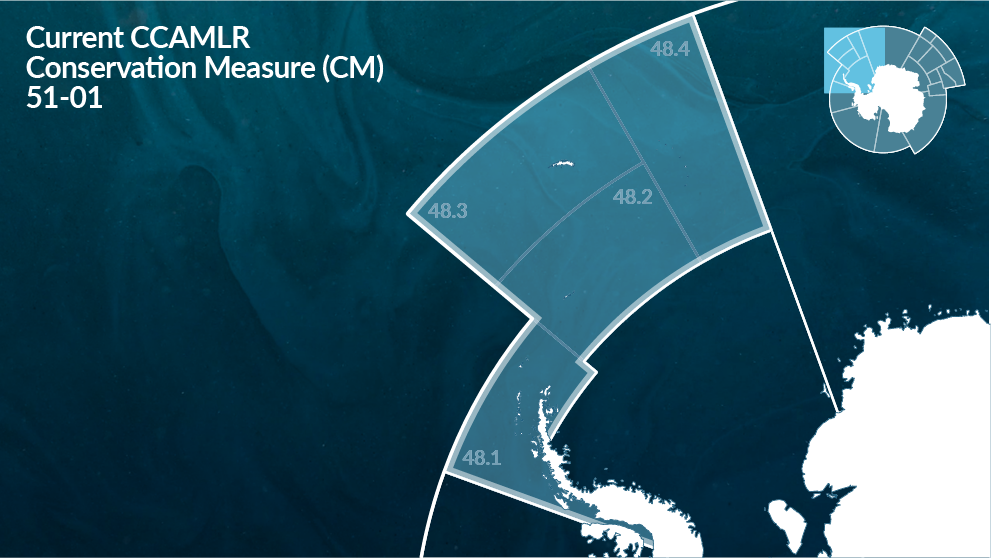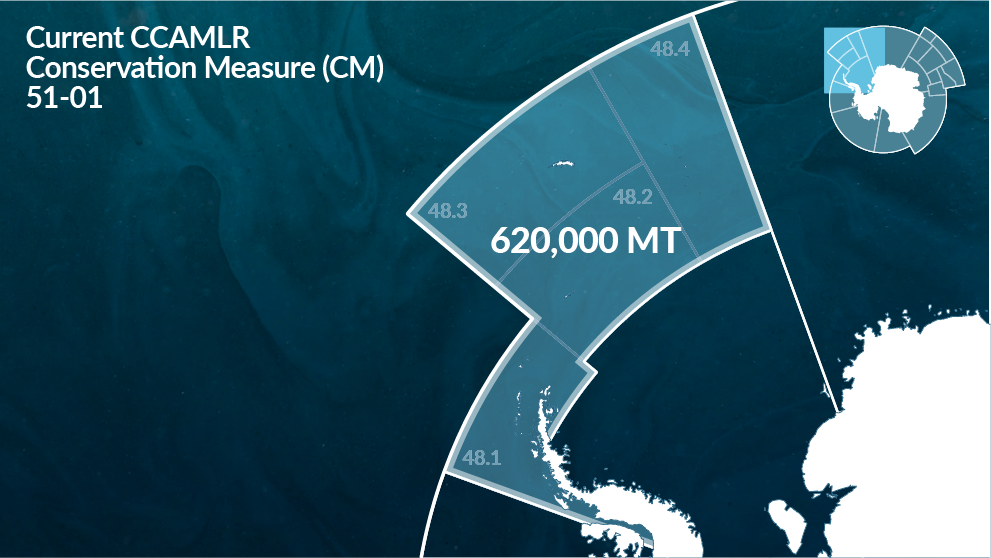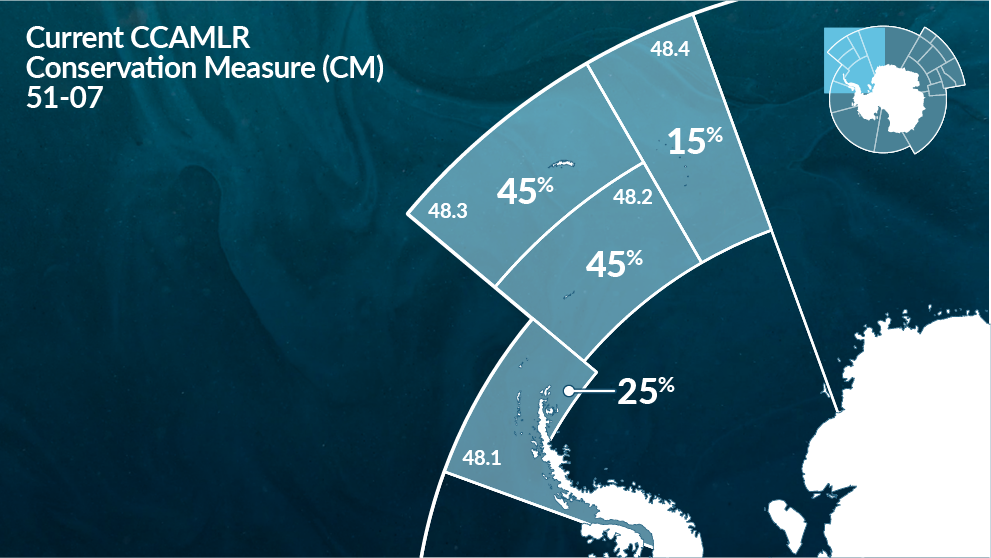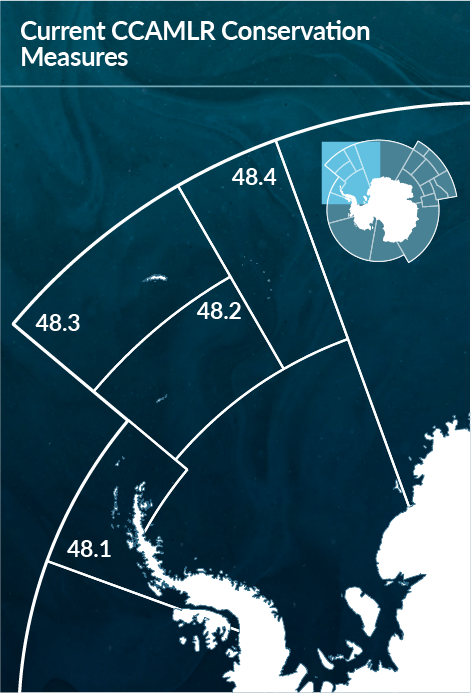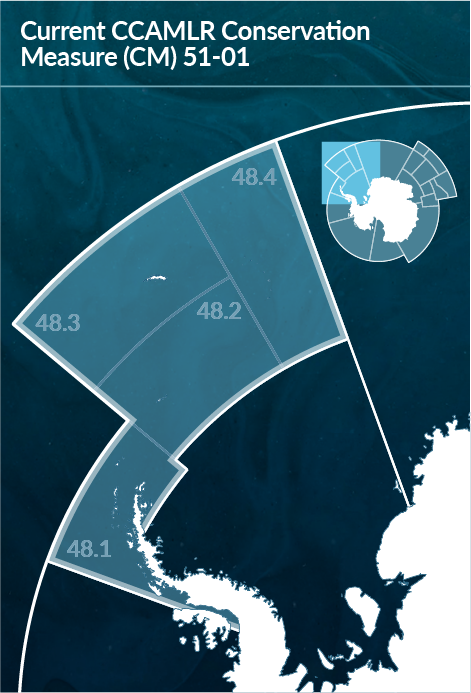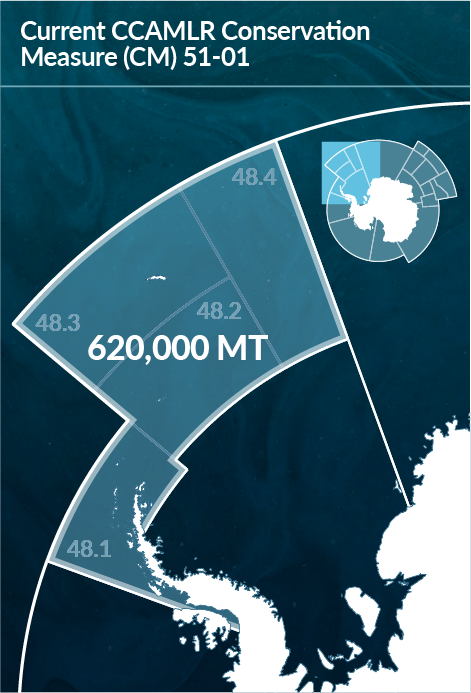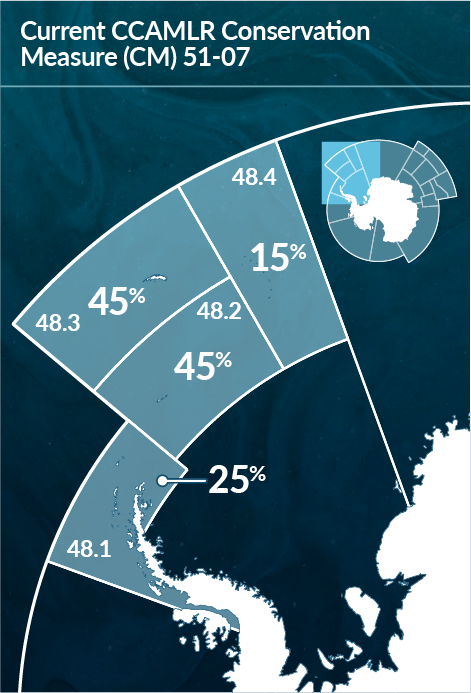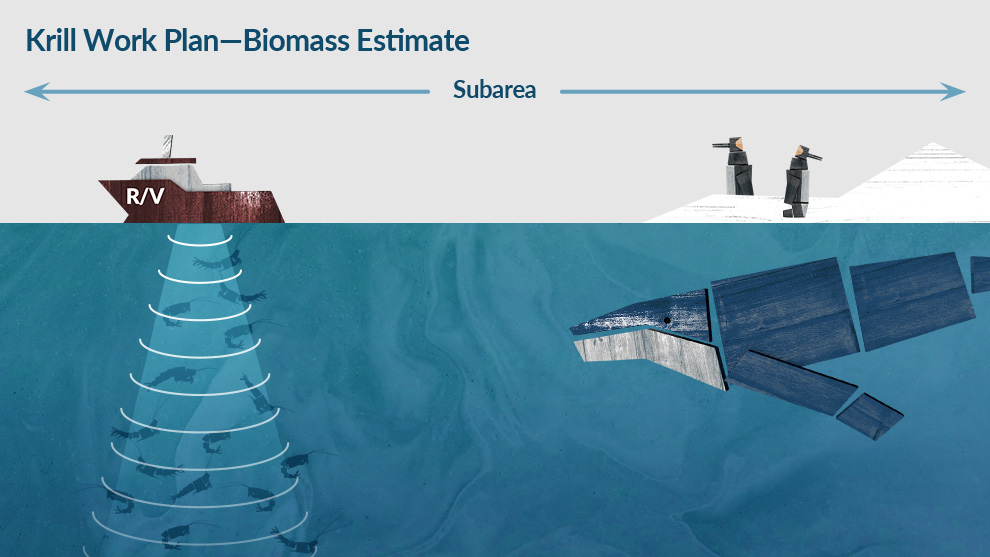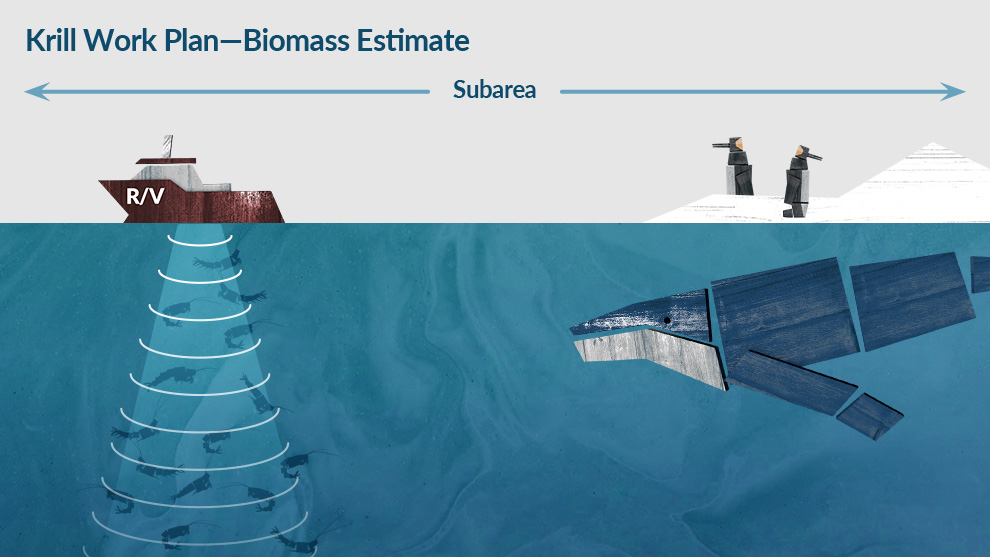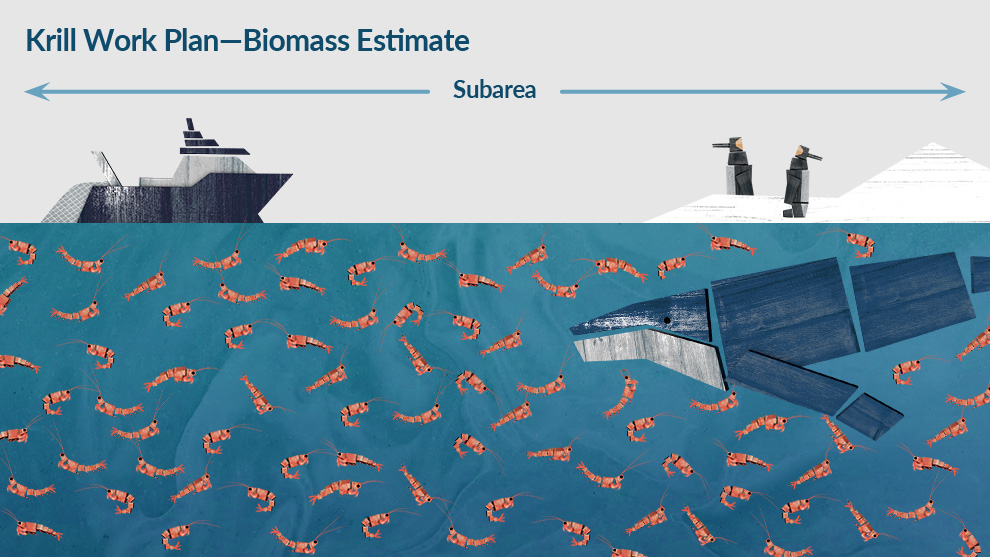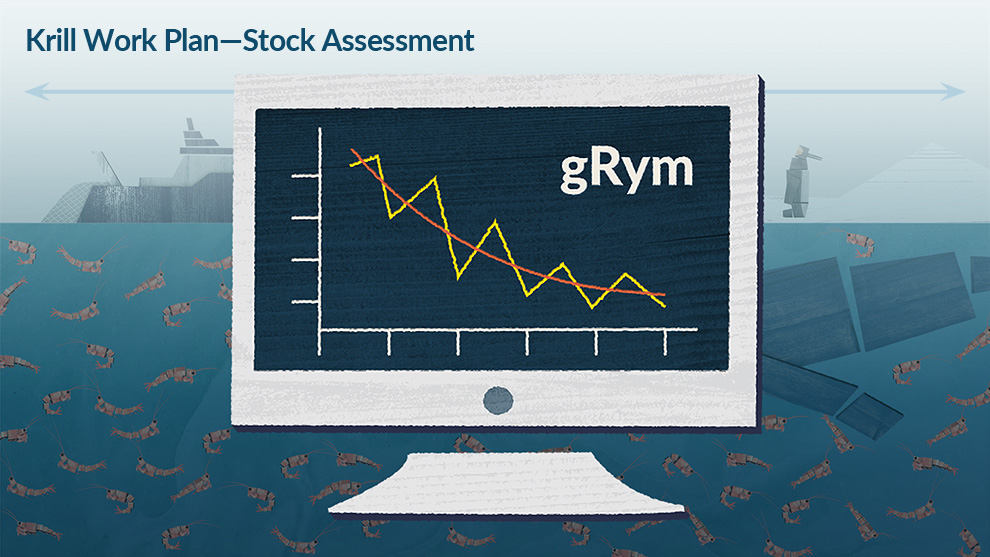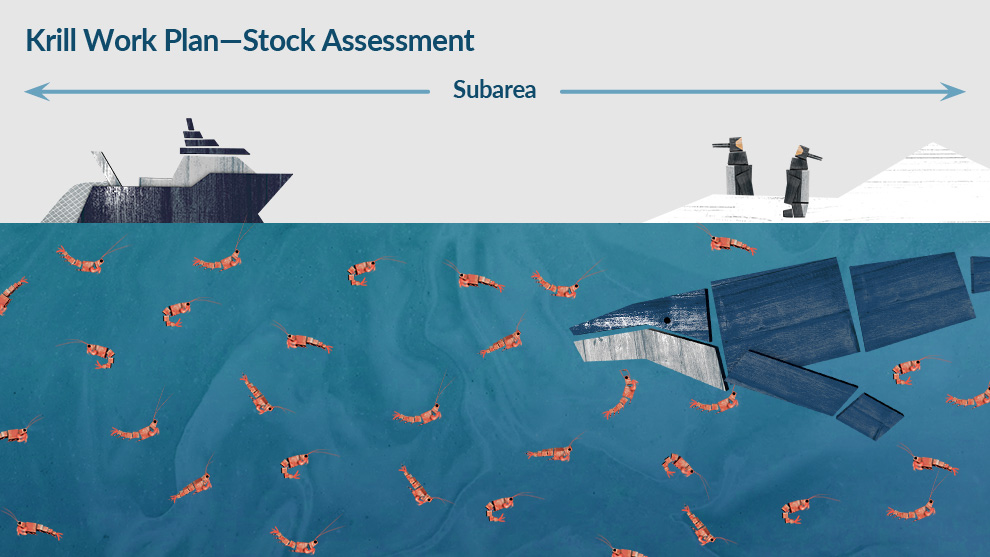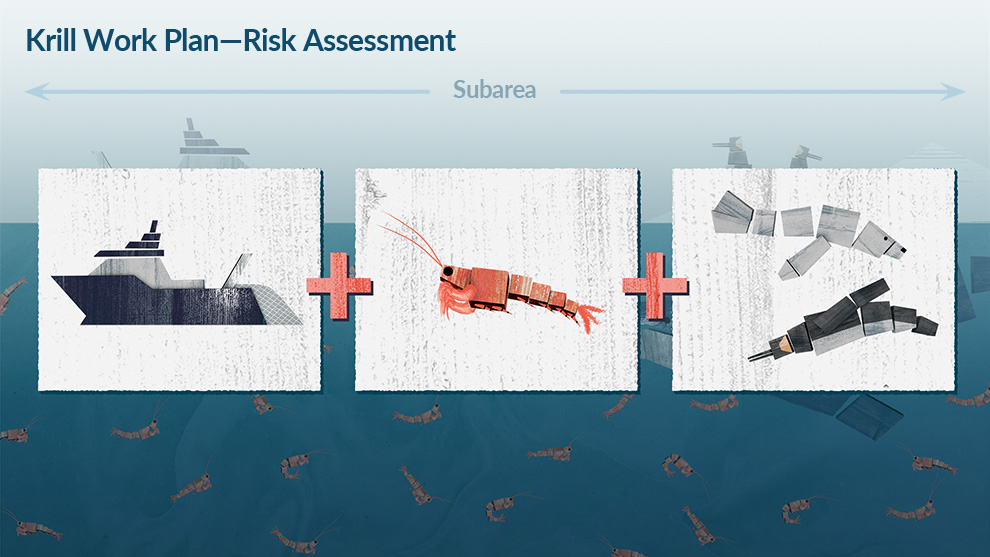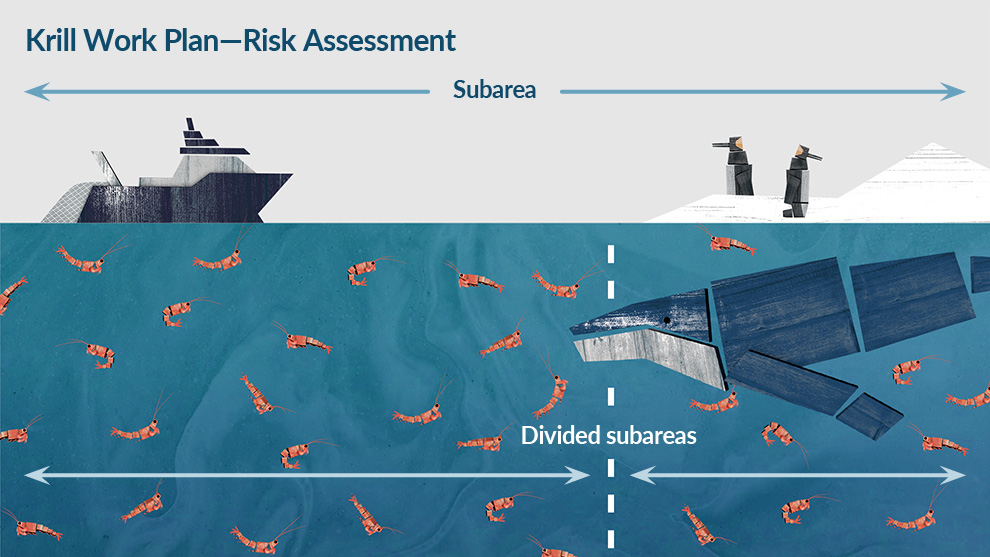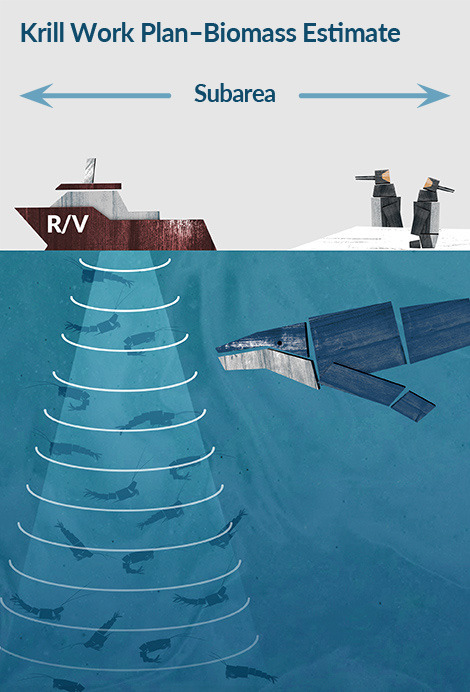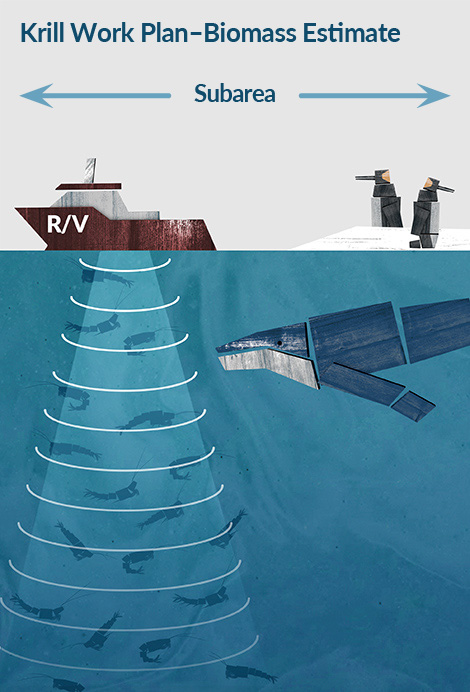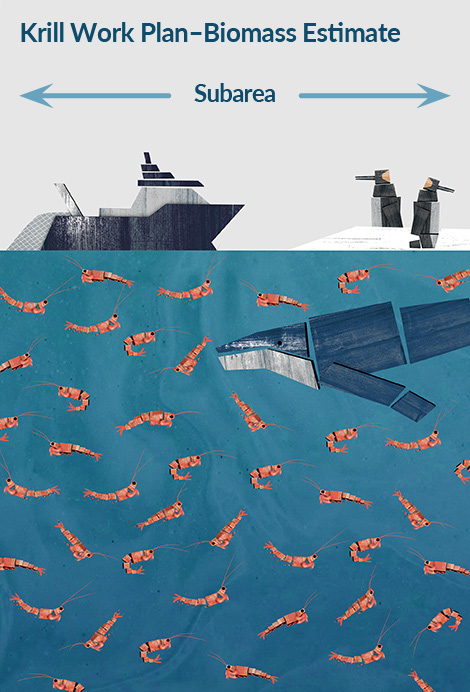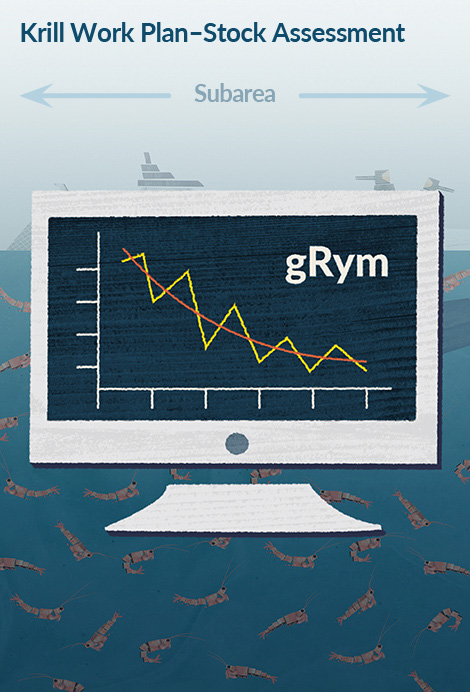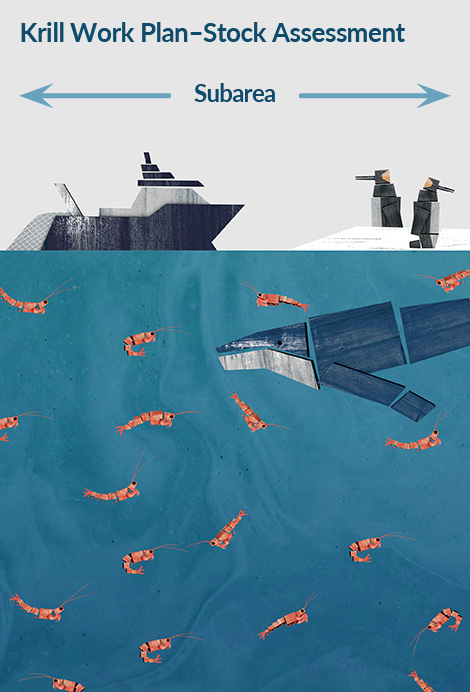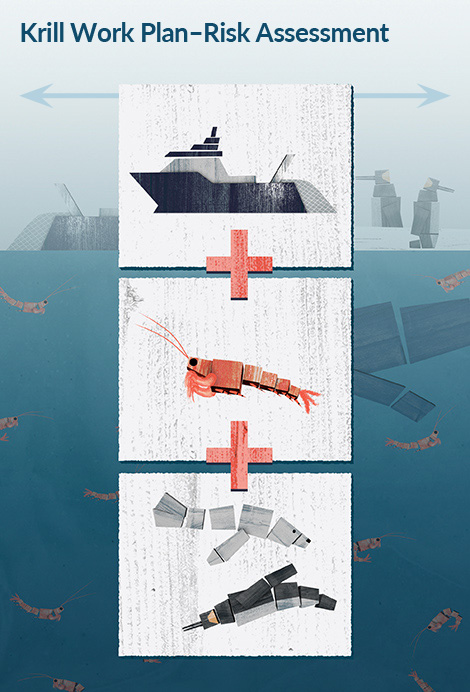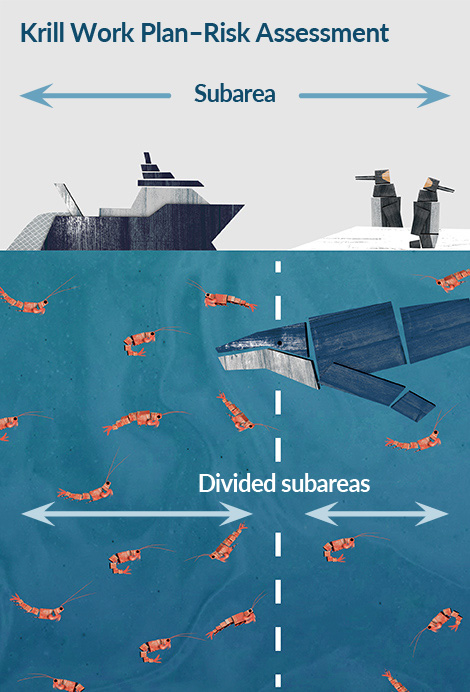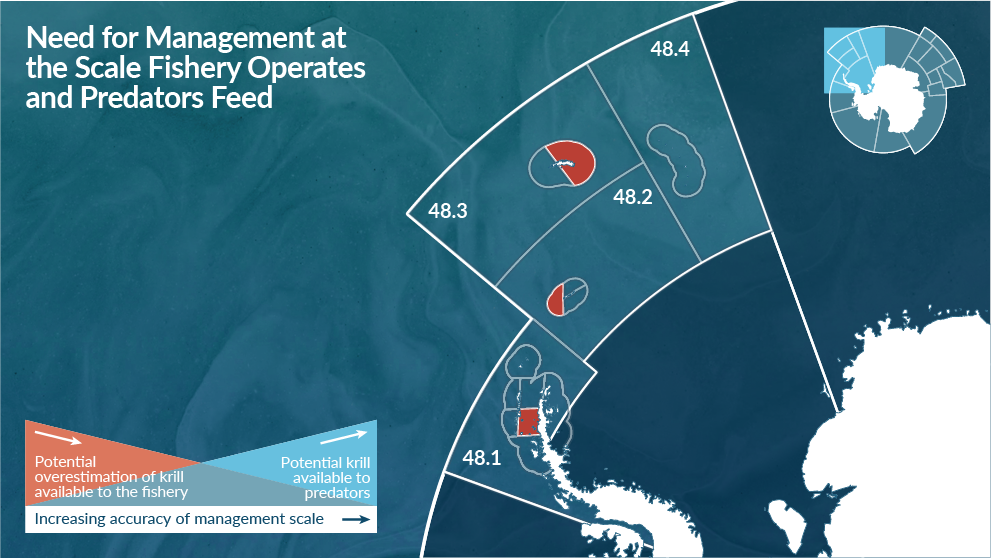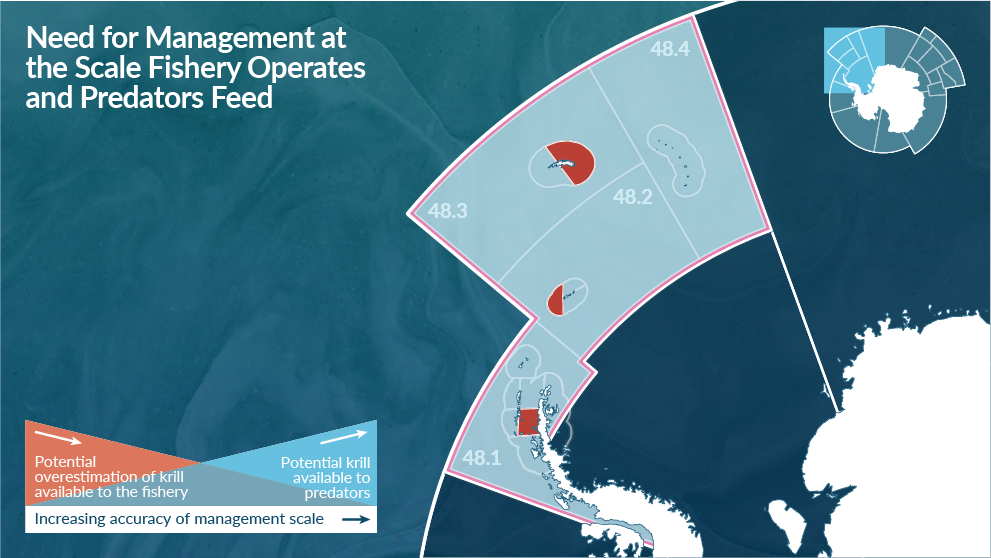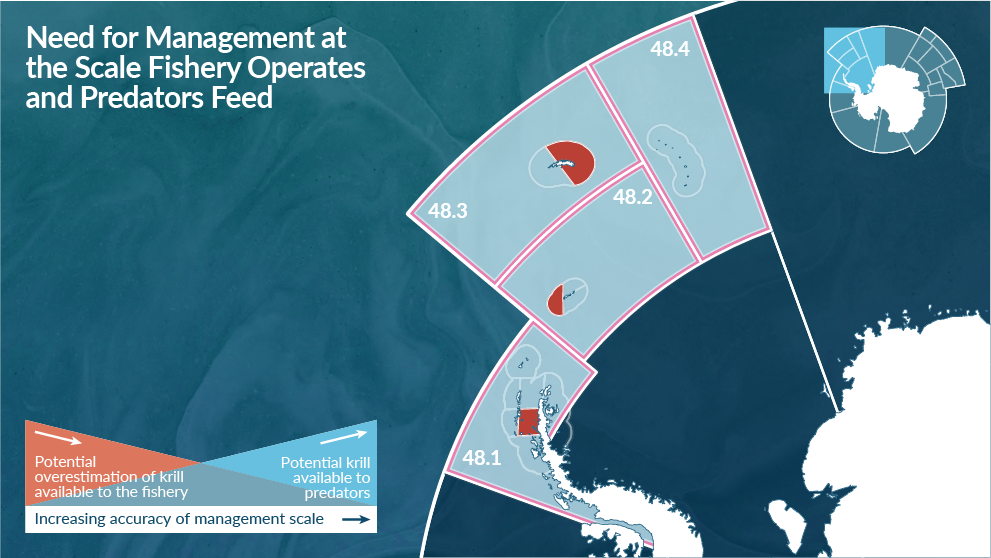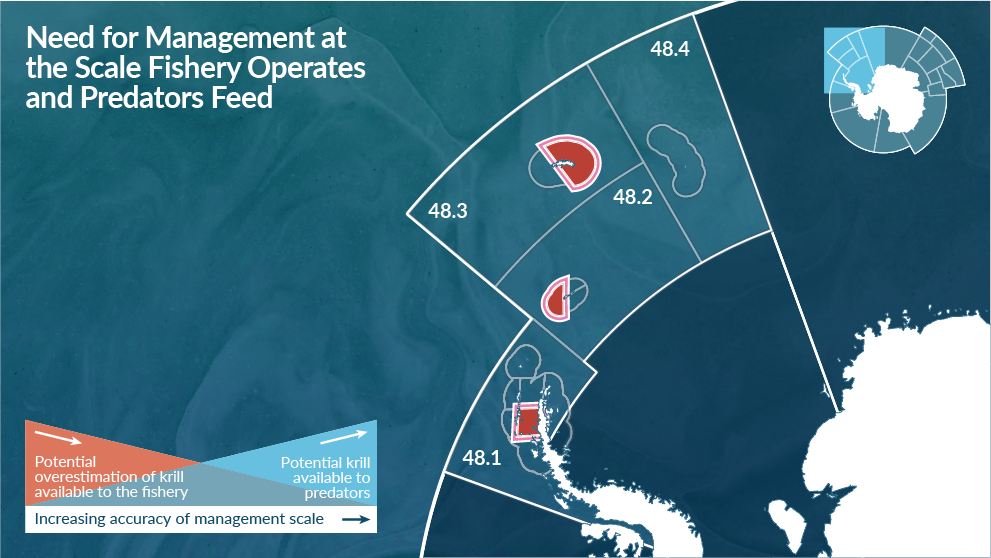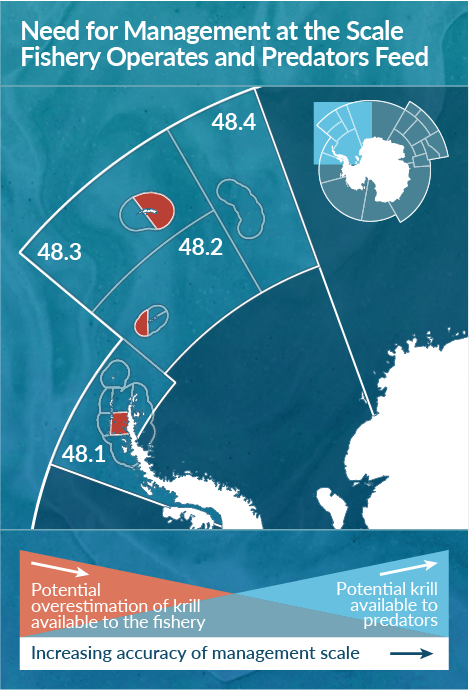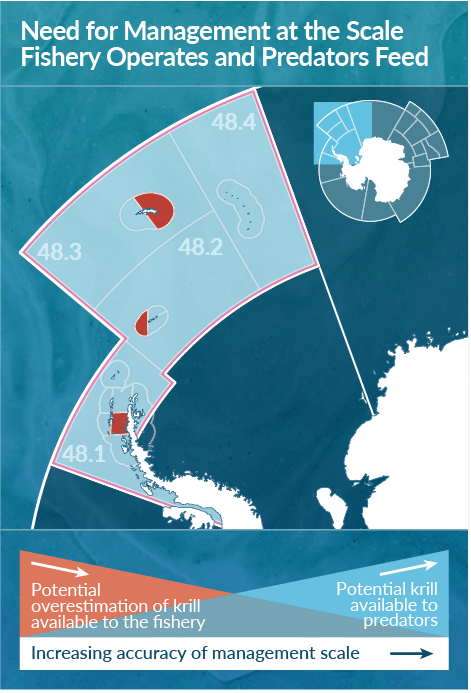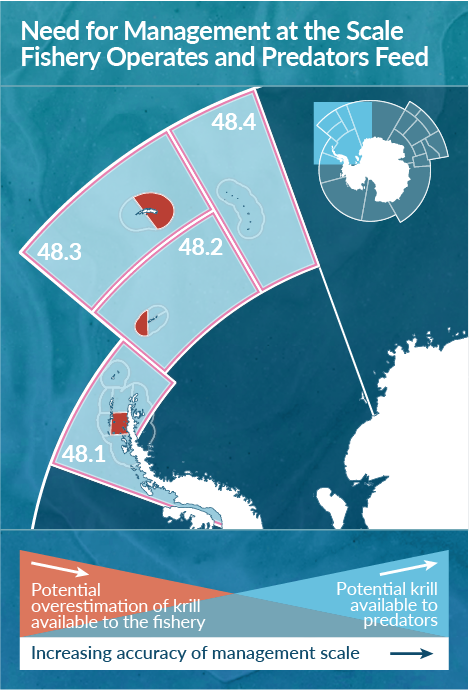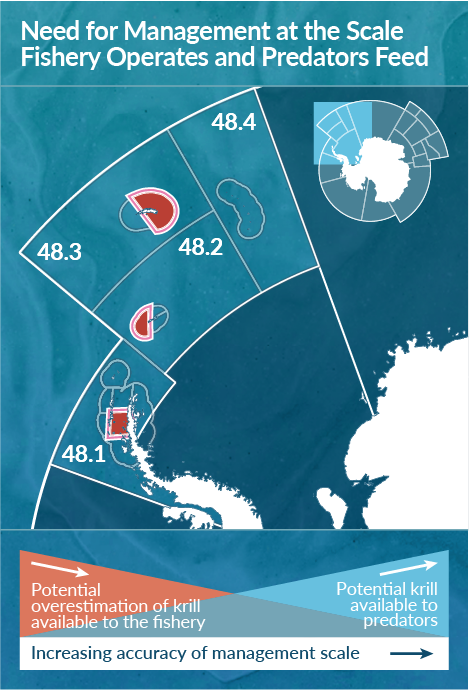Overview
At the heart of Antarctica’s Southern Ocean lives a tiny creature that must be protected: krill.
Without these small crustaceans, charismatic Antarctic predator species such as penguins, seals, and whales could not survive.
Not only are krill responsible for supporting Antarctica’s rich biodiversity, they are invaluable contributors to the fight against climate change.
But now, krill are facing severe threats from concentrated fishing and a warming planet—and we must act to protect this vital species.
That’s why members at this year’s meeting of the Commission for the Conservation of Antarctic Marine Living Resources (CCAMLR) must complete the work agreed to in the 2019 krill scientific work plan and adopt a new conservation measure that will:
- Ensure a healthy krill population
- Secure a sustainable krill fishery over time
- Help ensure thriving Antarctic predator populations
The commission has the power and responsibility to uphold its mandate for conservation and protect the Southern Ocean’s most important species. (See the full list of recommendations.)
To learn more about CCAMLR, check out this short video.
Why Do Krill Matter?
Antarctic krill (Euphausia superba) may be small, but they play a vital role in supporting the Southern Ocean ecosystem.
Antarctic krill make up the largest krill population globally, estimated at 400 million metric tons. Source: Polar Perspectives no. 5
These thumb-size creatures form the base of the Antarctic food web, sustaining predator species such as penguins, seals, and blue whales—which can eat several metric tons of krill a day.
Krill provide 96% of calories for seabirds and mammals in the Antarctic Peninsula.
Krill also play a critical role in the fight against climate change in the Southern Ocean.
Antarctic krill annually store the equivalent of carbon produced by 35 million cars.
Here’s how: Krill feed on carbon-capturing algae near the surface of the water.
Their carbon-filled waste drops to the bottom of the Southern Ocean, contributing to one of the largest regional ocean sinks for atmospheric CO2.
Check out this short video to see how it all works:
This video is hosted by YouTube. In order to view it, you must consent to the use of “Marketing Cookies” by updating your preferences in the Cookie Settings link below. View on YouTube
This video is hosted by YouTube. In order to view it, you must consent to the use of “Marketing Cookies” by updating your preferences in the Cookie Settings link below. View on YouTube
Unfortunately, Antarctic krill and their predators are currently under threat because of concentrated fishing and a warming climate.
Problem: Krill at Risk, Ocean at Risk
Threat No. 1: Concentrated Fishing
Concentrated fishing continues to be a serious concern, reducing the locally available amounts of krill for predators.
Currently, krill catch limits are set for dedicated subareas.
Now, within the Antarctic Peninsula region, fishing is happening in a more concentrated way.
Localized overfishing happens near predator foraging areas, competing directly with predators for krill.
Krill catch can be measured through dedicated small-scale management units to determine how krill fishing is affecting nearby predators.
Threat No. 2: Climate Change
Antarctica’s warming climate is also a major threat to krill. Research shows that warming waters are disrupting krill growth and reducing their habitat in the Southern Ocean.
Acidification from increased carbon dioxide has a negative impact on krill eggs hatching. Scientists project that future acidification could lead to the collapse of the region’s krill population by 2300. Source: Australian Antarctic Program
Because of krill’s role in bringing carbon from the surface of the ocean to the deep sea, the species is a major player in the fight against climate change.
Krill populations are projected to lose about 30% of their suitable habitat this century because of negative effects from human-driven climate change Source: University of Colorado Boulder
Combined, the threats of concentrated fishing and climate change are leading to a decline in predator species.
As localized overfishing and warming have increased, populations of penguins have declined.
Researchers have recently found the first direct evidence that krill fishing has harmed penguins at about the same level as certain severe climate events.
There is a 64% chance that penguins have been negatively affected over the past 30 years by concentrated fishing. Source: Off Antarctic Peninsula, Concentrated Industrial Fishing for Krill Is Affecting Penguins
“After warm winters preceded by higher fishing catches, penguins may not have enough krill near their breeding grounds to go around.”
Lucas Kruger, Researcher Chilean Antarctic Institute
But there’s hope. These issues can be solved by:
- Implementing an ecosystem-based management system for the krill fishery
- Growing the network of marine protected areas (MPAs) in Antarctica’s Southern Ocean
These solutions would not only benefit krill, penguins, and other krill predators, but would also improve the krill fishery itself.
Fortunately, there are decision-makers who can have an impact this year.
CCAMLR Members Can Help Solve This Issue
Each year, CCAMLR meets to set conservation measures that determine the use of marine living resources in the Antarctic.
And this year, krill is on the agenda in a big way.
The primary conservation measure that protects krill is expiring, and it’s up to CCAMLR members to decide how they are going to address this change
Krill Conservation Measures: A Brief History
In 2016, Conservation Measure (CM) 51-07 was renewed for a five-year period, the longest duration of the measure since its inception in 2009.
CM 51-07 states that CCAMLR must “update or replace this CM, in progressing feedback management, no later than the end of the 2020/21 fishing season, at which time this conservation measure will expire if agreement has not been reached.”
One Solution: CCAMLR 2019 Krill Work Plan
In 2019, CCAMLR scientists and member states agreed to implement a krill scientific work plan, also known as the “preferred management strategy.” The intention: that the science would lead to adoption in 2021 of a new ecosystem-based management measure to replace CM 51-07 that protects against irreversible impacts on the ecosystem.
CCAMLR members must decide on whether to set a new conservation measure based on completion of the work plan at this year’s meeting.
What does the work plan entail?
The 2019 krill work plan is broken down into three parts:
- Biomass estimate: Tells CCAMLR commissioners the amount of krill in the region of the Southern Ocean where the fishery currently operates.
- Stock assessment: Tells how much krill can be fished to leave enough for the long-term sustainability of the krill population in the region.
- Risk assessment: Tells how much krill can be fished and from where so that krill-dependent predators are not negatively affected by the fishery.
How can a new conservation measure help?
In passing a new conservation measure based on the scientific work plan, CCAMLR members would:
- Ensure a healthy krill population
- Secure a sustainable krill fishery over time
- Help ensure thriving Antarctic predator populations
It’s important that CCAMLR move forward with managing the krill fishery at a level that matches the scale of fishing operations and the foraging areas of krill predators.
Recommendations
For CCAMLR to meet the objective of its convention and prevent fishing impacts on predators that are not reversible within two to three decades, we recommend the following:
- That the CCAMLR Scientific Committee complete the krill work plan it agreed to in 2019—including the biomass estimate, stock assessment, and risk assessment—and use the resulting science to agree on a new conservation measure that improves protection for predators.
- If a new conservation measure is not ready to be negotiated, CM 51-07 should be renewed with a commitment to renegotiate once further scientific work is completed.
- That a complete lapse of CM 51-07—reverting to management under CM 51-01 alone—should not be allowed to happen. It would be irresponsible given what we now know about the combined impacts of climate change and concentrated fishing on the ecosystem.
Conclusion
The nations that have committed to preserve Antarctica for peace and science must come together to advance Southern Ocean protections.
This includes ensuring that krill—a tiny species with an outsize impact on the planet—is protected.
It’s the right thing to do—for the ocean, for wildlife, and for people.


